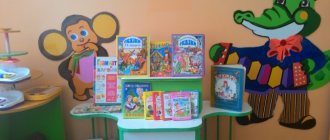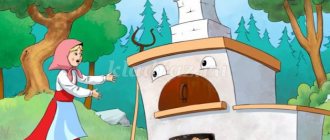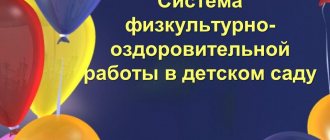Collective creative activities in kindergarten
Author: Chernyshova Svetlana Nikolaevna
Collective creative activities in kindergarten
The most complex and least developed type of activity is creativity. It is known that children's creativity is a unique phenomenon. If the mind, (knowledge, thinking, imagination), character (courage, perseverance), feeling (love of beauty, fascination with image, thought) take part in the creative activity of adults, then we must cultivate these aspects of the child’s personality in order to successfully develop creativity in him.
Collective creative activities are of great importance for the formation of creative abilities.
Collective creative activity
is an effective method of education, training and development of students, based on positive activity, collective authorship and positive emotions.
Collective creative activity
- these are not matters for the children and not only in the name of their education, these are the affairs of the children themselves, or rather, of the team, of which the adult also becomes a member.
The introduction of new Federal State Educational Standards (Federal State Educational Standards) in preschool education dictates the updating of the content and forms of work with children. Integration of educational areas is the scientific and methodological basis of the Federal State Educational Standard for Education. And creative activity, as a rule, connects the following educational areas: cognition, artistic creativity, communication, socialization, security.
Working with the children of my group “Kapelka”, I paid special attention to collective creative activity. The reason was that for some time my students suffered failures in events where they had to collectively “fight” for prizes: the children did not cooperate, but competed, everyone was for themselves, and there was no “team spirit” in the team. It was necessary to somehow unite the children, interest them, explain them... I found a way out of this situation in collective creative activities
, through which the group’s staff can be united and children’s creativity can be developed.
Collective creative activities differ from each other in the nature of their common practical concern.
Artistic collective creative affairs . Goal: to develop the artistic and aesthetic tastes of children; strengthen the craving for spiritual culture, art and the need to discover beauty to other people; awaken the desire to try yourself in creativity; cultivate receptivity, nobility of soul; enrich the inner world of a person (modeling, appliqué, drawing).
Labor collective creative affairs. Goal: to enrich children’s knowledge about the environment, to develop views on work as the main source of joy, to cultivate the desire to contribute to the improvement of reality, as well as the ability and habit to really, in fact, care for people near and far, to work independently and creatively for benefit and joy (Events were held: “Gift to Friends”, “Labor Surprise”, “Book Workshop”).
Cognitive collective creative activities. Goal: to form the needs for knowledge, a conscious, enthusiastic, effective attitude towards the immediate sources of discovery of the world. Cognitive collective creative activities have the richest opportunities for the development in preschoolers of such personality qualities as determination, perseverance, observation and curiosity, inquisitiveness of mind, creative imagination, comradely thoughtfulness, spiritual generosity (Events: “Evening of fun tasks”, “Evening of solved and unsolved mysteries” ", excursions, projects "Miracle City", "Nettle", "Take care of the birds").
Sports collective creative activities. Goal: to develop a civil attitude towards the sports and recreational side of life, towards physical culture, towards oneself as healthy and seasoned citizens of society; develop speed, agility, endurance, resourcefulness and perseverance, courage and courage, collectivism and discipline (Events: “Fun Starts”, “Call of the Jungle”, “Ski Track of Russia”, “Cross of the Nation”).
Social and patriotic collective creative deeds. Goal: to strengthen the civic attitude towards your family, school, big and small homeland; expand and deepen your knowledge about the history and culture of your country, learn to see and understand the beauty of life (Events: “Day of Knowledge”, “New Year’s Holiday”, “Defenders of the Fatherland Day”, “International Women’s Day March 8”, “Victory Day”, project "My Family")
Organizing collective creative activities. Any practical activity becomes collective and creative only in lively joint organizational activities (Events: students’ birthdays, drawing and craft competitions).
Each collective creative activity can take from several minutes to several weeks, depending on the goals, nature and composition of the participants.
Using all types of collective creativity in their work, I noticed that children learned to coordinate their actions and opinions, be attentive to the feelings and emotions of other people, plan their actions, and determine their sequence.
All my work on developing collective creativity in children has yielded good results. My students became winners in territorial events: Municipal festival “This kind fairy tale”, “The most beautiful” - Grand Prix; Municipal festival “Russian Soul” - 1st place; Municipal festival of children's creativity "Rainbow of the Planet of Childhood" Grand Prix and two first places.
And also my children are active participants and winners of regional, all-Russian and international competitions and events: All-Russian event “Memory Tree”; 5 All-Russian Science Festival NAUKA 0+ Children's drawing competition “The World of Science through the Eyes of Children” - 1st place; All-Russian creative competition for preschoolers “Feathered Friends” - 1st and 2nd places; International Children's Art Competition "Paints", Drawing Competition "The World through the Eyes of Children" - II, III places; IV International Children's Drawing Competition "Children on the Planet Are Friends", Open interregional tournament of abilities "RostOK-SuperUm" for children of senior preschool age - I, II, III places.
I am proud of my students and the results of the work done.
Educator: S.N. Chernyshova
comments powered by HyperComments
Corrugated paper mushrooms
You will need: corrugated paper, scissors, glue, paper straw, honeycomb paper, paints as desired.
Master Class
- Check out the mushroom template.
- Cut 2 rectangles from corrugated paper.
- Form a mushroom cap by gluing them together as shown in the photo.
- Cut out a small circle of corrugated paper and glue it in the center, covering the hole in the cap.
- Take honeycomb shaped paper, fold it several times and cut out a semicircle. Make 2 of these multi-layer blanks.
- Glue the semicircles together and form mushroom plates as shown in the image.
- Glue the plates to the bottom of the mushroom cap.
- Cover the straw with corrugated paper and glue it as a mushroom stem.
- Make a whole collection of mushrooms of different sizes.
- If desired, paint or tint them.
Corrugated paper mushrooms are ready!
Corrugated paper aster
- Secrets of builders: working with couplings
DIY New Year's crafts - 9 best options
- Crafts from stones for the little ones - learning colors
You will need: corrugated paper of purple, yellow, green and light green, scissors, wire, glue gun, pencil, ruler, watercolor paints, brush.
Master Class
- Prepare a strip of purple corrugated paper 4 cm wide.
- Tint one edge of the strip with purple paint and set aside to dry.
- Fold the strip several times.
- Make cuts along the unpainted edge. The first blank is ready.
- Make the second blank in the same way, only take a purple strip 6 cm wide.
- Prepare a strip of yellow paper 3 cm wide.
- Fold the yellow strip several times and make cuts.
- Wrap the wire with a light green piece of corrugated paper and secure with glue. This will be the stem.
- Wrap a yellow blank around the end of the stem - these will be the stamens.
- Twist the ends inside the purple piece, which is 4 cm wide, using a pencil.
- Step back from the base of the stamens and glue the petals.
- Take a 6cm wide purple blank and wrap it around the bud as shown in the photo.
- Twist the ends of the petals and straighten the middle.
- Cut out 6 sepals from green paper, then glue them on.
- Cut 6 long leaves of different sizes from light green paper and glue them to the stem.
The corrugated paper aster is ready! You will find even more flowers HERE.
I recommend watching this video!
Note! Crafts for February 23 in elementary school
Autumn leaves
You will need: double-sided colored paper, scissors, glue stick, ruler.
Master Class
- Prepare 10 squares of colored paper measuring 8x8cm.
- Take one square and fold it as shown in the photo instructions. It should look like a rhombus.
- In this way, fold a total of 6 blanks.
- Take 3 squares and fold them to form triangles.
- Glue 2 rhombuses together and one triangle in the center.
- Do this process with all the parts.
- Glue the blanks together to form a leaf.
- Make a total of 8 leaves of different colors in the same way.
- Glue the leaves together in a circle, then decorate a couple of them by making a face.
Bright autumn leaves made from colored paper are ready! I recommend watching this video!
Idea 1. Autumn topiary
Topiary is a decorative tree that can be used to decorate a dining table, mantel, or front door area. To make it, you can use natural or artificial materials, for example: leaves, berries on twigs, acorns, cones, chestnuts, flowers, dried citrus slices, as well as felt, sisal, linen and whatever your imagination tells you. In the next slider you can see several examples of such autumn crafts.
Next, we present to you a simple master class on making an autumn decorative tree from artificial leaves and berries.
- Clay pot;
- Wooden stick or branch;
- Two polystyrene or floral foam balls;
- Materials for decorating the crown;
- Dry moss (you can replace it with sisal);
- Glue gun and several glue sticks;
- Scissors;
- Side cutters or pruning shears;
- Acrylic paints for painting the trunk, ball and pot (optional).
Step 1. Cut a hole in the base ball with a sharp tool for the barrel, about a third of its diameter deep. Place a drop of hot glue into the hole and insert the barrel into it.
Step 2: Insert the second ball into the pot. If the ball does not sit tightly enough in the pot, place newspaper around it. Cut a hole in the ball for the trunk, 2-3 cm deep. Insert the trunk with the crown into the hole and adjust its length. Next, drop glue into the hole of the ball, place the barrel in it and begin to fill the hole with glue, placing small pieces of paper around the barrel. This is necessary so that the hot glue does not deepen the hole too much.
Step 3: Paint the pot the color you want if you don't like the original look. In this project, the pot was painted with spray paint in a dark bronze shade from Rustoleum (sold in construction stores, for example, in Leroy Merlin).
Remember that the design of the pot should be simple and unpretentious so as not to distract attention from the crown. If necessary, paint the barrel and/or balls at this stage. It is advisable to paint the balls so that the gaps between the decorative details are invisible.
Step 4. While the paint on our blank is drying, sort the decorative parts by type and size. If you use artificial leaves, flowers and berries with a wire base, then when cutting them, leave “stems” about 2 cm long. This is necessary in order not only to glue the parts, but also to stick them into the ball - then they will hold more securely . If the “stems” do not have wire, then it is better to cut the parts “at the root”.
Step 5. Now it's time for the fun part - creating the crown. First, evenly distribute and glue the largest parts onto the ball, then the middle ones. Finally, fill in the gaps with small embellishments.
Step 6. Well, that's all, all that remains is to decorate the ball in the pot with dry moss or sisal, after treating it with glue.
Similarities between different methods
When working with preschoolers, the main thing is to prepare them for school. All methods are subject to this, although there are many of them. There are also many methods for teaching DIY crafts.
But they are all based on the same principle - first a simple action, then a complex one. If the child has learned to cut out shapes along the lines, the next step is to have him draw what needs to be cut out. And then he will cut it out.
I learned to cut out what was drawn, I need to move on. Let the child learn to draw. Measure the required centimeters, draw lines, cut. And so it is in everything. As you gain experience.
Practical benefits of selling crafts
Creative projects, which are implemented in senior and preparatory groups of kindergarten during classes or independently at home, allow children not only to acquire new skills, but also to consolidate previously acquired skills. This approach makes it possible to facilitate the adaptation period at school. During classes they develop:
- memory;
- attentiveness;
- patience;
- perseverance;
- diligence.
To achieve their goals, educators use a variety of materials in project activities. This:
- working with paper;
- natural materials;
- plasticine;
- cotton wool, plastic.
Crafts are made on different topics. Educators strive to unite the children's team, teaching them to work in teams and individually, organizing exhibitions of work done together with parents.




